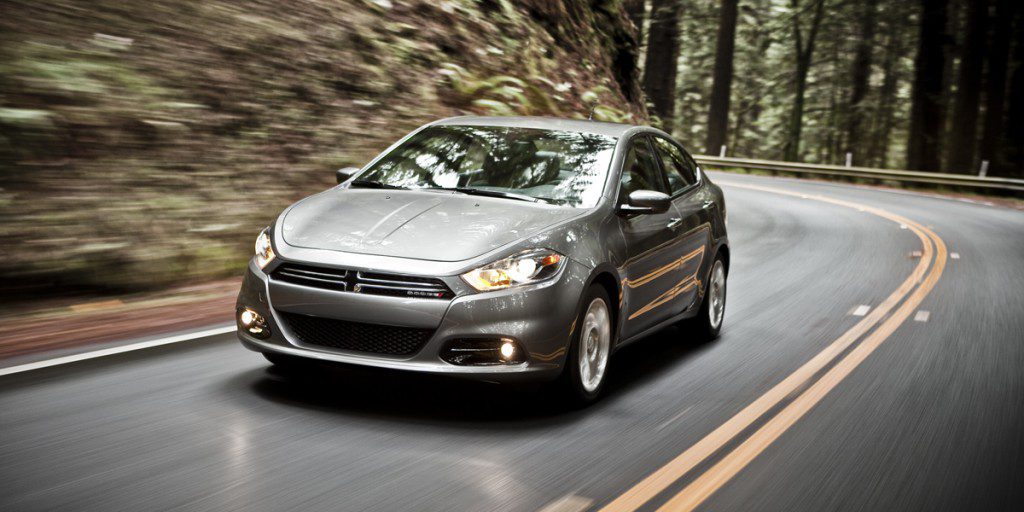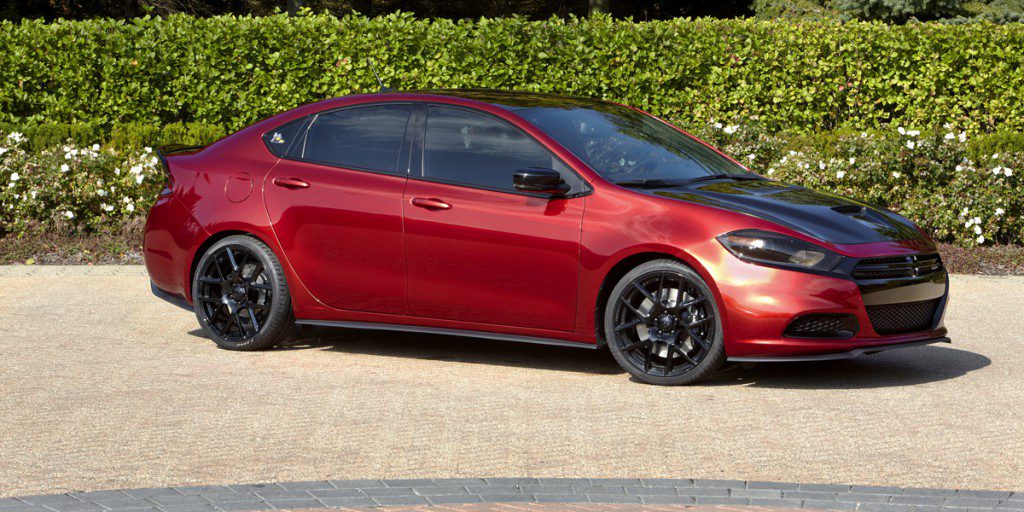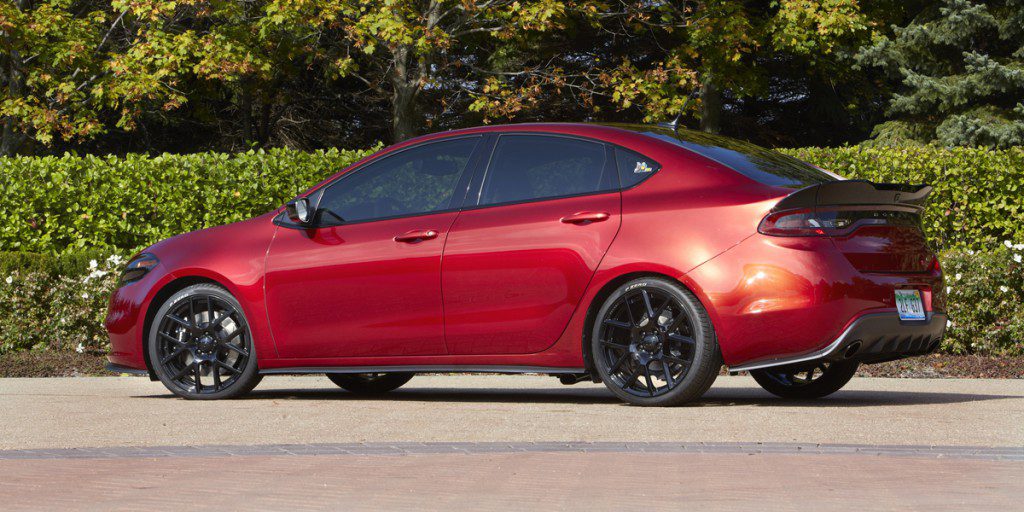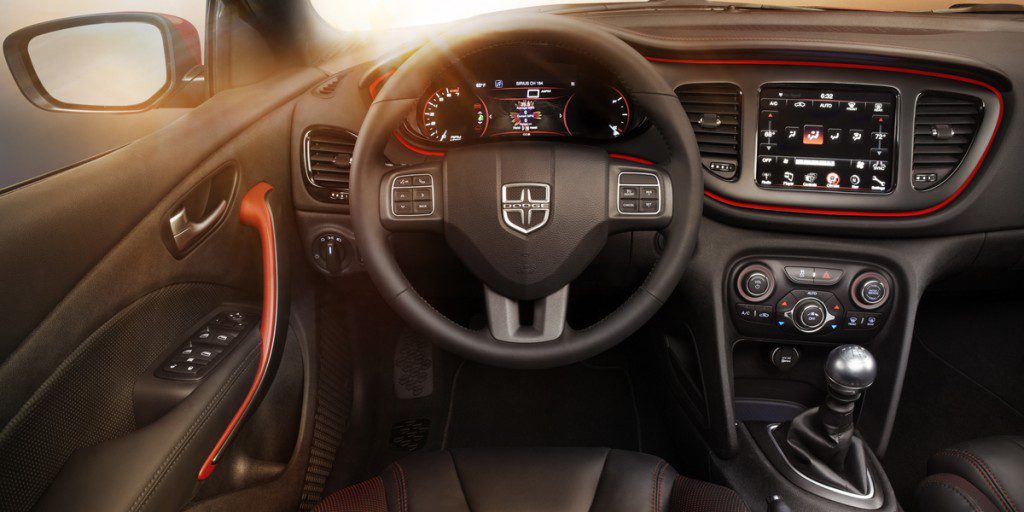| Compact car; Built in |
|
|
| Good condition price range: $8,000 – $17,900* |

2014 Dodge Dart

2014 Dodge Dart

2014 Dodge Dart

2014 Dodge Dart
| Pros: |
|
| Cons: |
|
Dart’s uplevel Limited has some options that you don’t often find in this class, such as rear cross-traffic alert and a heated steering wheel. Further, these extras don’t add a tremendous amount to the bottom line. These high-end items and the numerous “personalization” options are the Dart’s greatest strengths, as room and driving dynamics are nothing special compared to its rivals. No matter which Dart best suits your fancy, we would recommend sticking with the standard 2.0-liter 4-cylinder engine. The extra cost 1.4-liter turbo motor’s inconsistent throttle response and uncooperative transmissions more than offset any potential fuel-economy savings.
Overview
“Dart” was an old name resurrected for a very modern new car. Last used by Dodge in the 1970s, it was applied to a front-wheel-drive compact sedan that replaced the slow-selling Caliber 4-door hatchback in Dodge showrooms. Dart was significant not only because it gave Dodge a new and stronger entry in the compact-car segment, but also because it was the first vehicle to be developed jointly between Dodge and its new corporate parent, Fiat. In fact, the Dart’s platform was based on one that underpins the Italian-built Alfa-Romeo Giulietta sold in Europe (Alfa is another division of Fiat). Some powertrain components also came from the Fiat parts bin.
As a compact sedan, Dart competed against other “established” names such as the Honda Civic Sedan, Ford Focus, Hyundai Elantra, Mazda 3, and Toyota Corolla, along with relative newcomers Chevrolet Cruze and Nissan Versa.
One way Dodge tried to make the Dart stand out was by offering a host of features–many of them unique or rare in the compact class — along with a vast assortment of both exterior and interior color and trim choices. Although many of its parts were derived from foreign cars, the Dart was built in the U.S.
The standard powertrain was a 160-horsepower 2.0-liter 4-cylinder mated to either a 6-speed manual transmission or 6-speed automatic. Optional in all but the SE was a 160-horsepower 1.4-liter turbocharged 4-cylinder that offered more torque and better projected fuel economy; it was mated to either a 6-speed manual or 6-speed automated manual that behaved much like an automatic.
Standard on the GT was a 184-horsepower 2.4-liter 4-cylinder with either a 6-speed manual or 6-speed automatic.
Standard on the Aero was the same 1.4-liter turbo engine offered elsewhere. Similarly, it will pair with either the manual or automated-manual transmission.
Besides the expected safety features, Dart also offered rear side airbags, front knee airbags, rearview camera, blind-spot alert, and cross-path detection.
Yearly Updates
| 2013 Dart Little was changed for Dart’s second year in 2014. |
